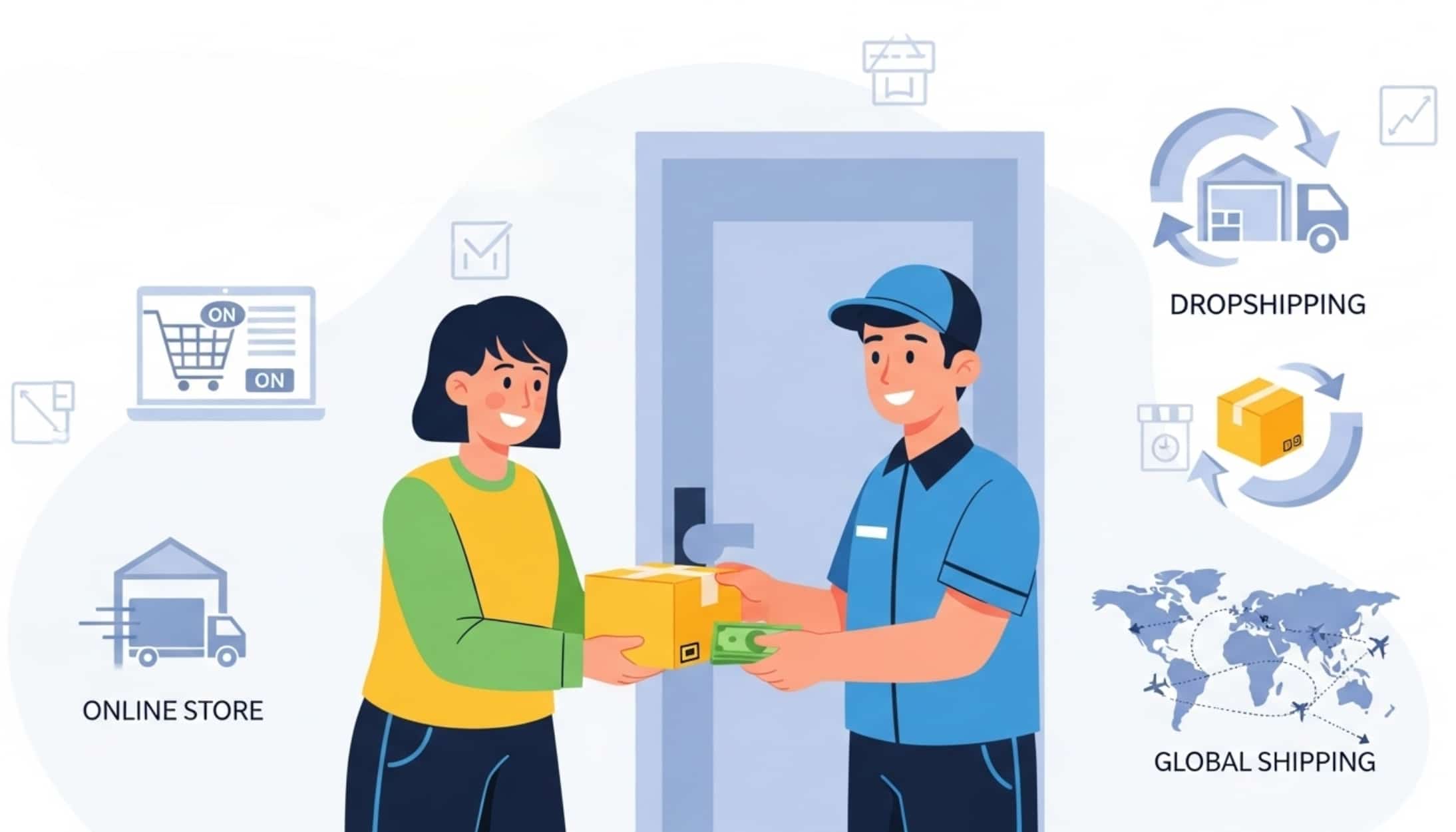Table Of Content
- What is a Return Policy?
- Why Your Business Needs a Return Policy
- Key Elements of an Effective Return Policy
- Setting Up a Return Management System
- Where to Put a Standard Return Policy
- How to Write a Return Policy (+ Free Template)
- Strategies for Profitable Returns and Exchanges
- Wrapping It Up
- Return Policy FAQs
Returns and refunds are simply part of running a business. No matter how great your products are, not every purchase will go perfectly. Customers might receive something damaged, order the wrong size, or decide it’s just not what they were hoping for.
Sometimes, they buy a few variations—like two different sizes of the same shirt—to try at home and decide later. This kind of buying behavior, often called “bracketing,” has become common, especially with online shopping.
What is a Return Policy?
A return policy is like a promise from your business to your customers. It’s a set of rules that explain how you handle returns, exchanges, and refunds when customers are not completely satisfied with their purchase. Whether it’s because an item didn’t fit, arrived damaged, or just wasn’t what they expected, a return policy tells customers exactly what they can do next.
A good return policy answers common questions like:
- How long do I have to return an item?
- Can I get my money back or exchange it for something else?
- Who pays for the return shipping?
- What condition does the item need to be in?
Having a clear return policy isn’t just about managing returns; it’s about building trust. When customers know they can easily return a product if needed, they’re more likely to buy in the first place. It’s all about giving them peace of mind and showing that you value their satisfaction just as much as the sale.
Why Your Business Needs a Return Policy
Every business, no matter how big or small, needs a return policy. Think of it as your business’s handshake with customers—it shows that you’re honest, transparent, and care about their experience. Without a clear return policy, customers are left guessing, and that uncertainty can keep them from making a purchase in the first place. A well-crafted return policy doesn’t just protect the customer; it also protects your business. It sets clear boundaries and expectations, which helps prevent misunderstandings. More importantly, it builds trust. When customers know they can easily return something if it doesn’t work out, they’re more likely to hit that “Buy” button.
In today’s shopping world, a return policy is no longer just a nice-to-have; it’s a must. It’s like having a safety net that reassures customers you’re committed to their satisfaction, which can turn a hesitant shopper into a loyal one.
Key Elements of an Effective Return Policy
An effective return policy is like a good conversation—clear, straightforward, and leaves no room for confusion. Here are the key elements that every solid return policy should have:
- Clear Timeframes:
Customers need to know how long they have to make a return. Is it 30 days? 60 days? Make this information stand out so there’s no guessing involved. - Conditions for Returns:
Be upfront about what’s required for a return. Does the item need to be in its original packaging? Unworn and unused? Lay out the basics so customers know what’s expected. - Types of Refunds Offered:
Make it clear whether customers will get a full refund, store credit, or an exchange. This helps manage expectations and prevents any disappointment at checkout. - Who Covers the Return Shipping:
This is a big one. Free returns are a huge perk, but if that’s not feasible, be upfront about who pays for shipping. Customers appreciate transparency, even if they have to cover the cost. Easy Steps to Process a Return: No one likes jumping through hoops. Outline the return process in simple, easy-to-follow.
steps. Whether it’s filling out a form online or bringing the item back in person, make sure it’s a smooth
ride.
- Contact Information:
Sometimes, customers need a little extra help. Providing clear contact info for questions or issues can make the difference between a frustrated buyer and a satisfied one. - Handling Special Cases:
Outline how you deal with exceptions, like damaged items, late returns, or holiday purchases. This extra clarity can prevent a lot of headaches down the road.
Setting Up a Return Management System
Whether you’re selling online or in a physical store, having a return management system helps make returns easy for you and your customers. With the right setup, you can save time and keep your customers happy.
What is a Return Management System?
A return management system helps you handle returns quickly and easily. It allows customers to start a return, print a shipping label, and send items back without hassle. For your business, it tracks returns, restocks items, and shows how returns affect your sales.
How to Set Up a Return Management System with Father Shops
Father Shops makes it easy to manage returns. Here’s how you can use its features: Create a Simple Return Process:
Father Shops lets you set up a clear and easy return process. You can guide customers on how to start a return using email, phone, or chat support.
- Send Automatic Updates:
Keep customers in the loop with automatic updates at every step. Father Shops can send messages when a return is received, processed, and refunded. - Provide Return Shipping Labels:
With Father Shops, you can offer prepaid shipping labels that customers can print at home. This makes the return process fast and simple. - Restock Items Fast:
Track and restock returned items easily. Father Shops updates your inventory so returned items are quickly back on sale. - Refund with a Click:
Once the return is approved, you can refund the customer with just a click, either back to their original payment method or as store credit. - Learn from Returns:
Father Shops lets you see why items are being returned, helping you fix common issues and improve your products. Using Father Shops for return management makes the whole process easy and smooth, helping you turn returns into a positive experience for your customers.
Where to Put a Standard Return Policy
Having a clear return policy is great, but making sure customers see it before they buy is just as important. If customers can’t find your return policy, misunderstandings can lead to frustration, especially if they’re trying to return a final sale item. To avoid back-and-forth conversations and ensure everyone’s on the same page, place your return policy in visible spots throughout your website.
Key places to include it are:
- Website Footer: Easily accessible from every page.
- Website Banner: Highlight key details, like “Free Returns” or “Final Sale Items Not Returnable.”
- FAQ Page: Answer common return questions here with a direct link to the full policy.
- Product Page: Briefly mention the return terms to set expectations upfront.
- Order Confirmation Emails: Remind customers of your policy after purchase.
- Website Chat: Link to your policy when customers ask about returns.
Father Shops makes it easy to include your return policy across all these areas, helping customers feel confident about shopping with you and preventing misunderstandings later on.
How to Write a Return Policy (+ Free Template)
Writing a return policy might sound like a chore, but it’s actually one of the most important things you can do for your business. A clear, friendly return policy can turn hesitant browsers into confident buyers.
Here’s how to write a return policy that works for both you and your customers, plus a free template to get you started.
- Start with a Friendly Introduction:
Begin by welcoming customers and letting them know you’re here to help. A friendly tone sets the stage for a positive experience, even if things didn’t go perfectly with their purchase. - Clearly State Your Timeframes:
Make sure to mention exactly how long customers have to make a return—30 days, 60 days, or whatever works best for your business. Keeping this information upfront reduces any confusion. - Outline What Can Be Returned:
Specify which items are eligible for return. Are sale items included? What about personalized products? Clearly outline any conditions so customers know exactly what to expect. - Explain the Refund or Exchange Options:
Let customers know if they’ll receive a refund, an exchange, or store credit. Transparency here can save a lot of frustration and set clear expectations from the start. - Make the Process Simple:
Describe the steps to make a return in an easy-to-follow way. Use bullet points or numbered steps to make it quick and clear. The simpler, the better. - Highlight Who Pays for Return Shipping:
If you offer free returns, make it known—it’s a big selling point. If the customer is responsible for shipping costs, make sure that’s stated clearly too. - Provide Contact Information for Support:
Include an email, phone number, or chat option where customers can reach out if they have any questions or need assistance with their return.
Free Return Policy Template
- Introduction:
We want you to be happy with your purchase! If you’re not satisfied, we’re here to help with easy returns. - Return Timeframe:
You have [number] days from the date of purchase to return your item. - Eligibility for Returns:
To qualify for a return, items must be unused, in the same condition you received them, and in the original packaging.
[Note: Sale items or personalized products may not be eligible for return.]
- Refund and Exchange Options:
You can choose to:- Get a full refund to your original payment method.
- Exchange the item for another product.
- Receive store credit for future purchases.
- Return Process:
Here’s how to make a return:- Step 1:Contact us at [email/phone] to request a return.
- Step 2: Pack your item securely in its original packaging.
- Step 3: Send your item to [return address].
- Return Shipping:
- Free Return Shipping: We cover the shipping costs for your return.
- Customer-Paid Shipping: Customers are responsible for the return shipping costs.
- Refund Processing Time:
Once we receive your returned item, we’ll inspect it and process your refund within [number] days. You’ll receive a notification once your refund is completed. - Contact Us:
If you have any questions about your return, reach out to us at [email] or call us at [phone number]. We’re here to help!
Simple Explanation of the Return Policy Template:
- Introduction: This section welcomes customers and reassures them that returns are easy if they’re unhappy with their purchase.
- Return Timeframe: Clearly states how long customers have to return an item (e.g., 30 days).
- Eligibility for Returns: Lists what conditions items must meet to be returned (e.g., unused, original packaging).
- Refund and Exchange Options: Describes what customers can expect—a refund, exchange, or store credit.
- Return Process: Provides easy, step-by-step instructions for customers on how to return their item.
- Return Shipping: Specifies who pays for the return shipping—either the business or the customer.
- Refund Processing Time: Explains how long it will take for customers to receive their refund after returning the item.
- Contact Us: Offers contact details for customers who have questions or need help with their return.
Strategies for Profitable Returns and Exchanges
Returns don’t have to be a loss for your business. In fact, with the right strategies, returns and exchanges can boost customer loyalty and even drive more sales. Here are some simple yet effective ways to make returns work for you:
- Encourage Exchanges Over Refunds:
Instead of processing a straight refund, offer customers the option to exchange their item. Highlight benefits like free shipping on exchanges or a small discount on their next purchase. This keeps the sale within your business and provides a better customer experience. - Offer Store Credit Incentives:
Offering store credit instead of a refund can be a win-win. Customers get the flexibility to shop again, and you keep the money within your business. Sweeten the deal by adding a small bonus, like 10% extra credit, to make store credit more appealing. - Turn Returns Into Learning Opportunities:
Use return data to identify trends—like frequently returned items or common reasons for returns. This feedback is gold; it helps you improve product descriptions, sizing guides, or quality, ultimately reducing returns in the long run. - Streamline the Return Process:
Making returns easy and quick improves customer satisfaction. With Father Shops, you can automate return labels, send instant updates, and quickly restock returned items, making the process efficient for both you and the customer. - Promote Sustainable Returns:
Encourage customers to choose eco-friendly return options, like consolidating returns into one shipment or offering in-store drop-offs. Not only does this reduce costs, but it also appeals to environmentally conscious shoppers. - Bundle Offers on Exchanges:
If a customer chooses to exchange, offer them a bundle deal or a small discount on additional items. This can turn an exchange into a larger sale and creates an opportunity to upsell. - Highlight Return Flexibility in Marketing:
Promoting your easy and flexible return policy can increase sales. Shoppers are more likely to buy when they know they have options if something doesn’t work out.
Wrapping it up
Returns are a normal part of doing business, no matter how hard you work to make everything perfect. But how you handle returns can make a big difference. A good return policy, combined with an easy process, shows customers that you care about their experience.
When returns are simple, customers feel more confident buying from you, and they’re more likely to come back—even if something goes wrong. It’s all about turning a small problem into a chance to show great service. Keep your return policy clear, make the process smooth, and you’ll turn returns into a win for your business.
Return Policy FAQs
1. Is a return the same as a refund?
No, a return and a refund are different. A return happens when a customer sends an item back to your store. A refund is when you give the customer their money back for that returned item, usually after you receive and inspect the item.
2.What is a return and refund policy?
A return and refund policy is a set of rules between your business and your customers. It explains how your business handles returns and refunds, including the timeframe for returns, how refunds are issued, who pays for return shipping, and which items are eligible.
3.Are businesses required to offer refunds?
Refund requirements depend on local laws, but not all businesses are legally required to offer refunds. However, having a no refund policy can hurt customer trust and discourage purchases, so it’s often better to have a fair policy in place.
4.How can I create a good return policy?
To create a good return policy, keep it simple, clear, and customer-friendly. Outline the steps for returns, set realistic expectations, and make your policy easy to find on your website. Avoid making demands on your customers, and ensure your team understands the policy well.
5.Why is a return policy important for my business?
A clear return policy builds trust with your customers, reduces confusion, and can turn a negative experience into a positive one. It sets clear expectations, which can help retain customers and encourage them to shop with you again.



 Free Return Policy Templates
Free Return Policy Templates




